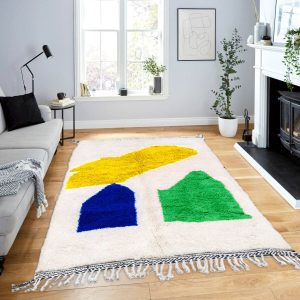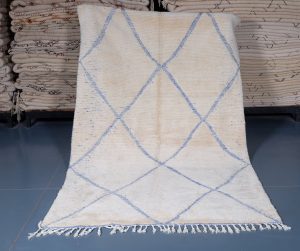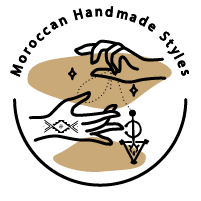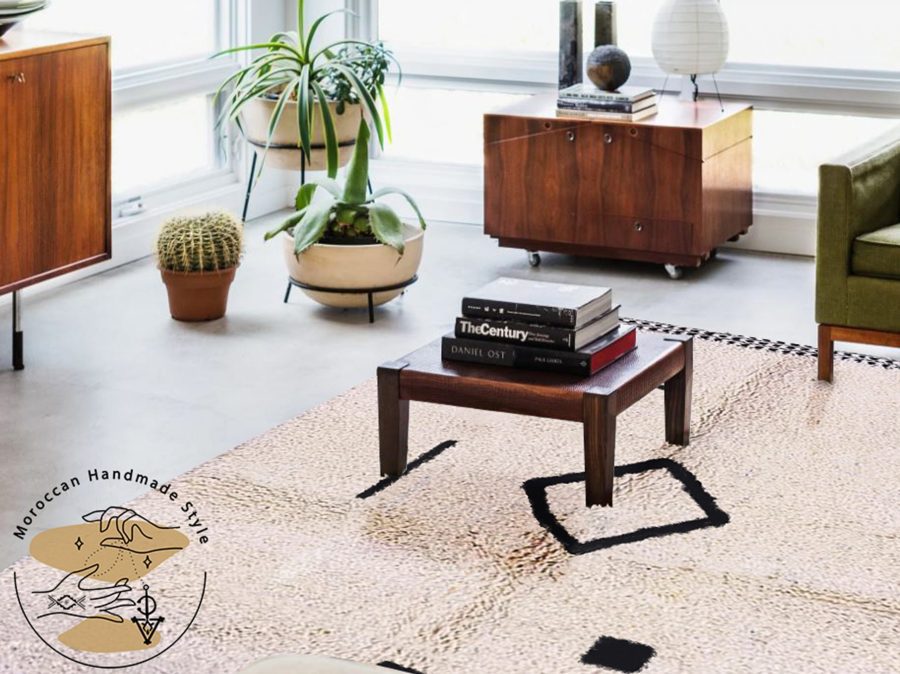When shopping for a Moroccan rug, remember to bargain. You should pay about 50 to 60 percent less than the sticker price. Negotiation is part of the culture in Morocco, and Moroccans expect it. While bargaining is expected, it is also OK to walk away if you do not like the price. Also, make sure to check whether the rug has been used. The bill of sale should state this.
 Azilal Azilal Moroccan rug
Azilal Azilal Moroccan rug
Choosing an Azilal Moroccan rug is a great way to add Moroccan beauty to your home. These rugs are handcrafted by Berber women in Morocco and are both comfortable and stunning. They can come in many shapes, including square, round, and rectangle. Many of these rugs are unique, so you can find one to suit your unique style.
Azilal rugs are made by women from the Berber region of Morocco, in the High Atlas Mountains. They are typically made of cotton and wool and are made with love and care. They are incredibly soft and are suitable for any style of home.
Boujad
A Boujad Moroccan rug is a unique creation made by women in the Atlas Mountains. These rugs are known for their geometric patterns and bright colors. These rugs are traditionally knotted by hand using ancient techniques, and the tribes that create them often trade their crafts in the town of Boujad.
The Berber women who make Moroccan rugs weave the intricate designs on the rugs with their own unique style, incorporating symbols and symbolism that have a deep cultural meaning. These women made their rugs while living in the mountains of the atlas, and they needed rugs to keep warm. They also used the wool from sheep for weaving. This wool is then spun into a yarn, giving birth to rugs.
The Boujad Moroccan Rug is a beautiful example of hand-woven pile rugs that is handmade by women in Morocco. These rugs are hand-woven in the Haouz region of the Middle Atlas. The women weave each rug by hand, and the process can take months. These women use ancient weaving methods that have been handed down through the generations. As a result, Boujaad rugs are endowed with subtle imperfections that give them a unique artistic effect.
 Beni Ouarain rug
Beni Ouarain rug
If you’re looking for an elegant and timeless piece of Moroccan decor, then a Beni Ouarain handmade Moroccan rug is a great choice. Traditionally made of thick natural wool, Beni Ouarain rugs feature geometric black and brown patterns. The colors of this traditional style reflect the mountains in the Middle Atlas region, and the thick pile construction provides durability and comfort. They are also often adorned with symbols that represent nature, femininity, and fertility.
Beni Ouarain handmade Moroccan rugs are an excellent addition to any room in your home. These rugs are produced by a Berber tribe, and each one is unique in design, pattern, and color. These rugs are traditionally woven without diagrams or patterns, and the design is usually unique to each weaver. The intricate designs of Moroccan rugs are often colorful and geometric, and they complement any interior design.
Mrirt rug
Mrirt is a term that describes a woven wool rug that has a high pile. These rugs are handmade by women from the Berber region in Morocco. The carpets are made of undyed natural wool and traditionally feature geometric designs. Mrirt rugs are beautiful, versatile home accents that link nomadic Berber tribes with contemporary interiors. A Moroccan rug of this type can elevate a simple space into an opulent one.
The Beni M’rirt tribe produces some of the best rugs on the African continent. These rugs are made of the highest-quality wool in Morocco, which is why they have a luxurious feel. The process that they go through is lengthy and meticulous.
taznakht ruh
The taznakht area of southern Morocco is home to a unique type of Moroccan rug, known as the Tikdift. Handmade by women, these rugs are a beautiful and unique addition to any home. They come in all shapes and sizes and are made of high quality yarn. This type of Moroccan rug is commonly used in bohemian decors, and it looks beautiful with wood furniture.
Women from the region began weaving textiles around 600 BC. These women now produce unique rugs, pillows, and blankets. The designs are often colorful, with symbols representing good fortune, peace, prosperity, happiness, and mental relief. Many of the rugs can be quite pricey, as they take months to create.

